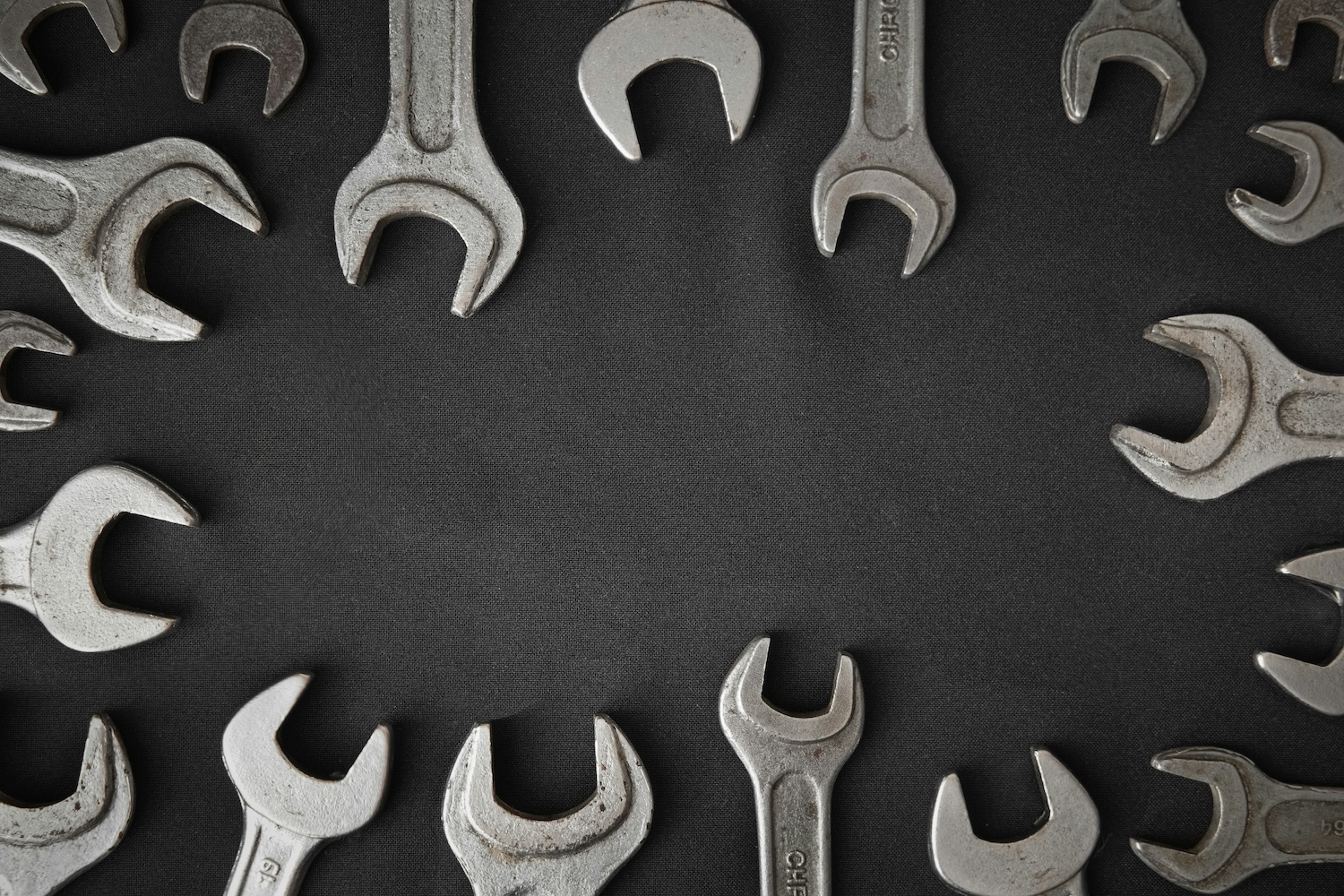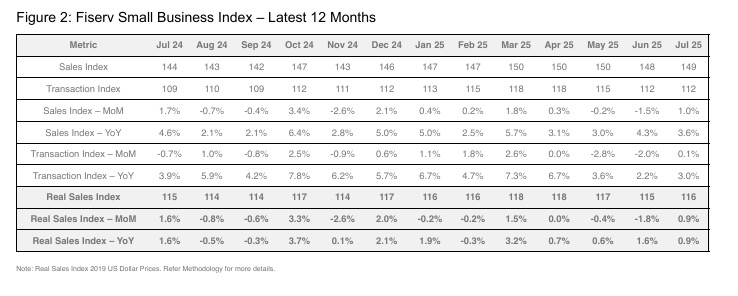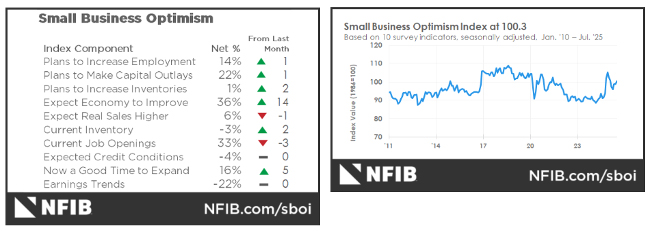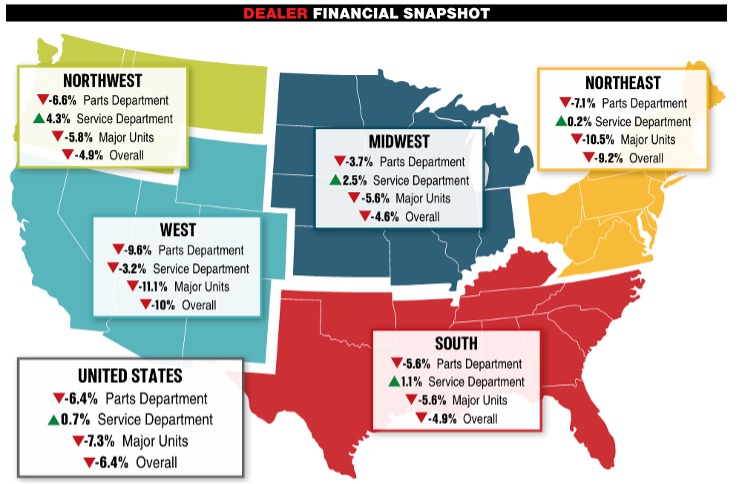KPI – August 2025: The Brief
While uncertainty is still high, optimism rose slightly in July with business owners expecting more positive business conditions…

- KPI – August 2025: State of Business – Automotive Industry
- KPI – August 2025: State of Manufacturing
- KPI – August 2025: State of the Economy
- KPI – August 2025: Consumer Trends
- KPI – August 2025: Recent Vehicle Recalls
With consumers on high alert, confidence and sentiment data are at odds with an increase in Fiserv Small Business Index and NFIB Small Business Optimism Index results. Significant downward revisions in the job market, threatening tariffs, as well as geopolitical division and war, have consumers on edge; however, recent small business data points to resilience and optimism in business conditions. In the months ahead, all eyes are fixated on the economy—measuring job growth, analyzing tariff impacts and monitoring interest rates.
The seasonally adjusted Fiserv Small Business Index registered 149.2 in July, increasing 3.6% year-over-year and 1% month-over-month. In addition, the Fiserv Small Business Transaction Index showed positive momentum, growing 3% year-over-year and 0.1% month-over-month. According to industry professionals, such gains highlight consistent consumer engagement and spending across small businesses. The Real Fiserv Small Business Index (adjusted for inflation) reached 116.2 in July, with year-over-year and month-over-month growth of 0.9% each.

Key Takeaways, Courtesy of The Fiserv Small Business Sales Index:
- Sales gains continued to lean more aggressively toward Essentials (+1.5% month-over-month, +6.1% year-over-year) compared to Discretionary areas (+0.5% month-over-month, +1.1% year-over-year). Data shows the shift of necessity comes with higher costs for consumers, as average tickets for essentials continued to rise as well.
- Restaurant visits dipped for the third straight month (-0.3%), with sales declining -0.9% month-over-month and -1.1% year-over-year after inflation. “As a bellwether for household budget flexibility, restaurant performance signals consumers are continuing to tightening up,” according to the report.
- The Fiserv Small Business Index for Professional, Scientific and Technical Services in the U.S. increased by 4.4% year-over-year, while the Real Fiserv Small Business Index year-over-year percentage increased 1.6%, reflecting long-term change as of July. From a month-over-month perspective, the Fiserv Small Business Index for Ambulatory Health Care Services in the U.S. grew by 3.2%, alongside the Real Fiserv Small Business Index month-over-month percentage increase of 3.4%, indicating a short-term trend in July. Additionally, the Fiserv Small Business Transaction Index year-over-year percentage for Food and Beverage Retailers in the U.S. increased by 3.6%, highlighting customer activity during the same period.
In July, the NFIB Small Business Optimism Index increased 1.7 points to 100.3, slightly above the 52-year average of 98. Better business conditions, coupled with respondents expressing now is a good time to expand, were major contributors to the index increase. Labor quality was the chief concern for small businesses, with 21% of respondents reporting it as their single most important problem, up five points from June’s report and the largest monthly increase since August 2022.
“Optimism rose slightly in July with owners reporting more positive expectations on business conditions and expansion opportunities,” says Bill Dunkelberg, NFIB chief economist. “While uncertainty is still high, the next six months will hopefully offer business owners more clarity, especially as owners see the results of Congress making the 20% Small Business Deduction permanent and the final shape of trade policy. Meanwhile, labor quality has become the top issue on Main Street again.”
Important Takeaways, Courtesy of NFIB:
- The Uncertainty Index rose significantly, up 8 points to 97. July had a notable improvement in overall business health, with 13% reporting excellent (5% increase), 52% reporting good (3% increase), 31% reporting fair (4% decrease) and 4% reporting poor (3% decrease).
- Small business owners reporting poor sales as the single most important problem rose 1% to 11%, the highest reading since February 2021.
- The net percentage of business owners expecting better business conditions climbed 14% to a net 36% (seasonally adjusted), well above the historical average.
- Inflation as the single most important problem for small business owners remained unchanged at 11%, its lowest reading since September 2021.
- Data shows job openings hit their lowest level since December 2020, with 33% (seasonally adjusted) of small business owners reporting openings they cannot fill. This figure is still well above the monthly historical average of 25%.

Professionals in the automotive, RV and powersports industries remain steadfast in their efforts to evolve their business models and grow their brands in the face of adversity. As such, the monthly Key Performance Indicator Report serves as an objective wellness check on the overall health of our nation, from the state of manufacturing and vehicle sales to current economic conditions and consumer trends. Below are a few key data points explained in further detail throughout the report.
Key Data Points:
- Economic activity in the manufacturing sector contracted in July for the fifth consecutive month, following a two-month expansion preceded by 26 straight months of contraction, say the nation’s supply executives in the latest Manufacturing ISM Report On Business. The Manufacturing PMI registered 48% in July, a 1% decrease compared to the 49% recorded in June.
- In July, the Consumer Price Index for All Urban Consumers (CPI-U) increased 0.2% on a seasonally-adjusted basis after rising 0.3% in June, according to the U.S. Bureau of Labor Statistics. Over the last 12 months, the all-items index increased 2.7% before seasonal adjustment.
- In July, the Global Light Vehicle (LV) selling rate improved to 94 million units per year. The market grew over 6% year-over-year, as sales reached 7.4 million units globally. Total new vehicle sales in August, including retail and non-retail transactions, are projected to hit 1,483,000—an 8.2% year-over-year increase, according to a joint forecast from J.D. Power and GlobalData.
- Powersports Business says dealers across the country reported an overall combined revenue decline of 6.4% year-over-year in June, according to composite data from more than 1,700 dealerships in the U.S. that utilize CDK Lightspeed DMS. On average, dealerships were down 7.3% in major units and 6.4% in parts, but up 0.7% in service.




